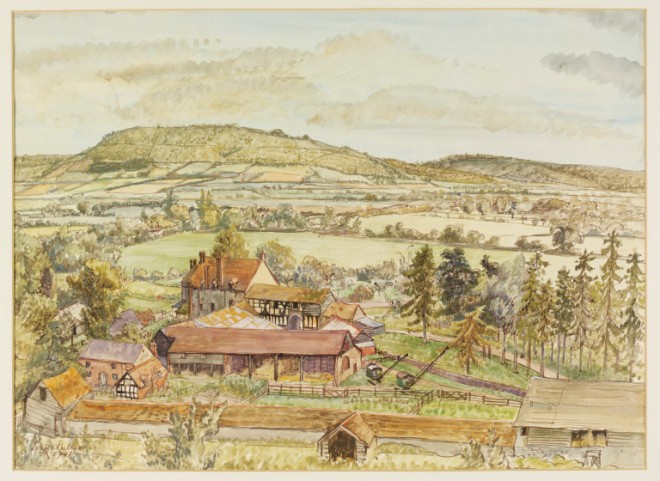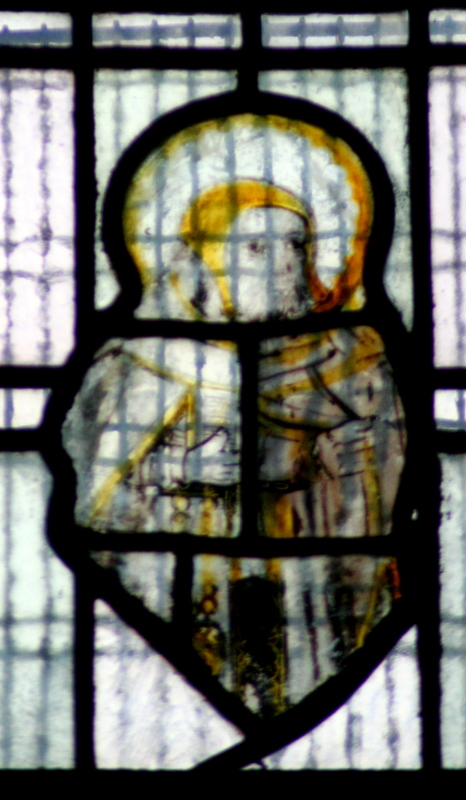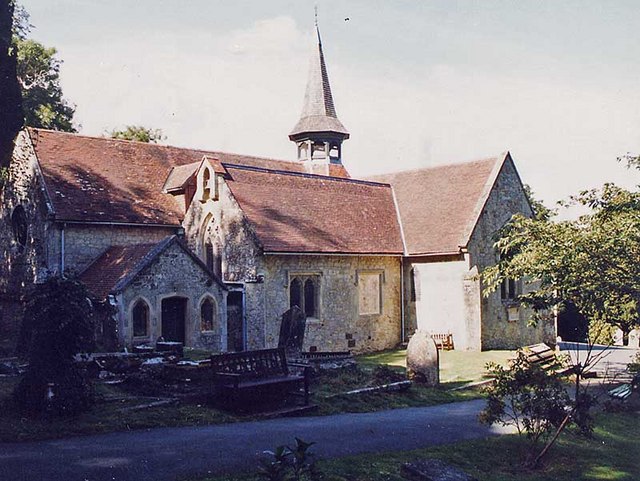The medieval Abbot had a complex role. He was a spiritual father, Baron and politician. As this is such a large subject, a series of six posts will examine his functions in depth. Along the way we’ll meet some of the more interesting Abbots!
-
Introduction – A General Overview
-
Elections, Appointments and Interference
-
Spiritual Role and Responsibilities
-
Financial Acumen, Securing Lands, Grants and
-
The Abbot as Lord of the Manor
-
The Abbot in the Political Sphere

Introduction
Abingdon Abbey was founded by the Saxon Kings of Wessex in the seventh century. It had a sometimes turbulent history. The Abbot’s role expanded as the function of the monastery changed over the following nine-hundred years. In excess of fifty men held the Abbacy, some more effective than others. Case studies will be used to explore their roles, abilities and failings.
Monasticism was not a static concept. Originally monks lived solitary lives of prayer and contemplation away from society. The Rule of St Benedict, written in the sixth century, is a blueprint for life within a monastic community. A structured life of prayer, silent contemplation and work, the Opus Dei. Although cloistered, these monasteries dispensed charity to the wider world. Parts of their churches were open to the community. Many monks maintained links with their families1. The Rule provided Abbots with the flexibility to tailor it to the needs and purposes of their communities2.
Monks took vows of poverty, chastity and obedience, and swore allegiance to their Abbot. However St Benedict did not believe that poverty meant deprivation. The monks were well fed, and their duties not excessively onerous. The Abbot, as Spiritual Father and leader of the House was responsible for their physical and spiritual welfare. His role originally encompassed teaching, preaching, role modelling, discipline and spiritual direction. Changes in medieval society soon required him to become so much more.
As theology, religious practices and politics evolved, Abbeys and Abbots gained importance and became less isolated. The doctrine of purgatory, encouraged royalty and magnates to found and patronise Abbeys, Priories and monastic cells. The monks prayed for the souls of their benefactors and their families, living or dead, in return. Abingdon was twice created a Royal foundation34. Its two dependent priories were founded by noble families. The tiny, short lived cell at Edwardstone, Suffolk, essentially a chantry chapel5. Its monks later transferred to the larger Colne Priory, Essex. A dispute occurred in the early fourteenth century with Colne’s founding family, due the Abbot’s mismanagement.Abingdon lost control of the priory but maintained its financial interests.6
Daughter houses were not the only distant communities the Abbot had responsibility for. Some monks attended university, living in a house owned by the Abbey7. Others oversaw the work of lay brothers on the monastic farms. The Abbot needed to know his senior monks (obedientaries), well, so that men of ability and strong faith were appointed to head up these institutions. Within the Abbey he also needed trusted men to manage its various departments and ensure that the practices of the monks below them were appropriate. Should problems arise, the Abbot also had the right to remove these men from their posts. Abbots however were not autocrats. The Rule required that minor decisions were made in Chapter. Major decisions were to be taken by the Abbot and the obedientaries. Should problems arise these could be taken to the Head of the Order.

Between the tenth and fourteenth centuries the monasteries grew in size and number. Many diversified,taking advantage of the strengths of the community and its environs. Abingdon operated a hospital, a school, a scriptorium and developed links with the university. Many monks studied for ordaination, allowing them to become chantry priests. The tasks of the Opus Dei shifted away manual labour. Yet across Europe communities had more mouths and were struggling to be self supporting. Monasteries began accepting lay brothers to resolve this situation. They took vows but lacked the health or education required of choir monks. The undertook the manual labour of the monastery. Some working remotely on monastic granges, they became experts on agriculture and animal husbandry.8.
Abingdon, was land rich due to the donations of its patrons9. Much was rented out, in return for rents and fines. Its income was enhanced by financial offerings,churches, gifts of jewels, precious metals, ecclesiastical garments and relics10. The relics encouraged pilgrimage, which brought in further income. The land adjacent to the Abbey was occupied by the town, providing an income from rents, mill charges and the markets and fair the Abbey was licensed to hold. Tithes and offerings provided additional food. Abingdon was refounded and rebuilt in the tenth century and building continued from this point. Its altars and shrines were richly decorated and it was well endowed with the trappings of ecclesiastical life.
The possession of land, whether it belonged to the monastery or The Abbot’s office, required him to function as a secular Baron. The Abbot’s Treasurer deputised. He employed stewards and bailiffs to manage the lands, collect rents, tolls and taxes, and maintain order. He presided over the manorial court, resolving disputes between tenants, dealing with minor crime and committing those charged with serious matters to trial by the King’s justices11. The Abbot was also required to know the law, in order to protect the Abbey’s rights to these lands and prosecute infringements. The Abbey’s relationship with the local community and its neighbouring towns often proved challenging. Especially as it jealously guarded the income from the markets and fairs12.
Another important relationship was between Crown and Abbey. As Royal Foundation, Abingdon held certain privileges. However the complex balance of personalities, benefits and inherent risks could be problematic. The Abbot was required to host the King and Court, which proved costly.13. This provided opportunities for the Abbot to influence the King, and nominate men of ability from the House for Royal service. The King also relied on high ranking church men for advice and guidance, to ensure State and Church worked in harmony.
The relationship between King and Church could be difficult. An avaricious King with little respect for the church could strip its assets. A King in dispute with Pope or either of England’s Archbishop might impose sanctions. Abingdon’s charter gave the King the right to remove the Abbot. Another clause prohibited him from interfering in elections but there are instances where Kings imposed candidates14. Regalian Rights, allowed the Crown to seize a monastery when the Abbacy fell vacant. By refusing permission for election of a new Abbot15, the monastery’s income was diverted to the Royal Treasury. The Abbey also became responsible for knight’s fees or scutage16. In times of civil unrest or dispute, the Abbot did have the option of asking for the King \to take the Abbey under his special protection. This was exercised in the early reign of Edward III17.

The Abbot also required a good relationship with his diocesan Bishop, in this case Salisbury. Bishops could refuse to consecrate newly elected Abbots. They could also order Visitations to ensure the Abbey was well run18. Abingdon held the rights to several parish churches. The Abbot was responsible for the appointment of priests and their conduct. He also needed to cultivate links with the Pope. Should problems arise with his position or his relationship with fellow senior church men, he had the right to appeal to Rome. Depending on the nature of the case, the Pope could settle matters by letters, or investigation. The Pope could also grant dispensations, these could range from reducing the rights of the Bishop to making life more comfortable for the monks. A working knowledge of canon law was also useful, although there would be specialist knowledge within the community.
In summary a medieval Abbot needed to have a range of skills. He needed to be a spiritual leader, manage the monastery and the lives of the monks within and beyond its walls. A politician with skills in negotiation, pleading cases and managing sometimes fraught relationships. Able to assess the abilities of his subordinate and delegate effectively. Good at building relationships both within and without the cloister. Careful that his personal conduct and relationships did not bring the Abbey into disrepute. He also needed to be a scholar, with an excellent knowledge of scripture. An inspirational teacher and preacher. Confident in dealing with legal matters. A mammoth task in many ways, and as the coming case studies show, difficult to wholly fulfill.
1Kerr J (2009) Life in the Medieval Cloister. Bloomsbury London pp67
2Theisin J (2015) The Rule of St Benedict, Introduction. [online] http://www.osb.org/gen/rule.html Accessed 22/08/2017
3Stevenson J (1858) Chronicon Monasterii de Abingdon vol I p 1–14
4Stevenson J (1858) Op cit p255-261
5Heale M (2004) The Dependent Priories of Medieval English Monasteries. The Boydell Press, Woodbridge p46
6Heale M (2004) op cit pp101-2
7Patent Rolls Richard II vol I, membrane 17 p487
8Lay brother (2017) History [online] http://laybrother.com/history/ Accessed 23/8/2017
9Hinde T (ed) (1985) The Domesday Book, England’s Heritage Then and Now. Guild Publishing London p32-3
10Stevenson J (1858) Op cit pp255-261, 344-7
11Straughton E & Winchester A (2017) Cumberland Manorial Records, Manor Courts. [online] http://www.lancaster.ac.uk/fass/projects/manorialrecords/manors/whatis.htm Accessed 23/8/2017
12Ditchfield PH & Page W (eds) (1907) Houses of Benedictine Monks, Abingdon Abbey IN A History of the County of Berkshire vol II. Victoria County History, London p51-62
13Patent Rolls 40 Henry III , membrane 12d, in Vol iv, p159
14Stevenson J (1858) Chronicon Monasterii de Abingdon vol I p 463-4
15 Smith DM and London V.C.M. (2001) (Eds) The Heads of Religious Houses of England and Wales II 1216-1377
16 Roberts CJD (2014) The Constitutions of Clarendon – Clause Twelve and the Regalian Rights of the Kings of England. [online] http://conclarendon.blogspot.co.uk/2014/10/clause-12-and-regalian-rights-of-kings.html Accessed 22/08/2017
17Calendar of the Close Rolls of Edward III, Vol I p203
18Kerr J (2009) op cit p 127












